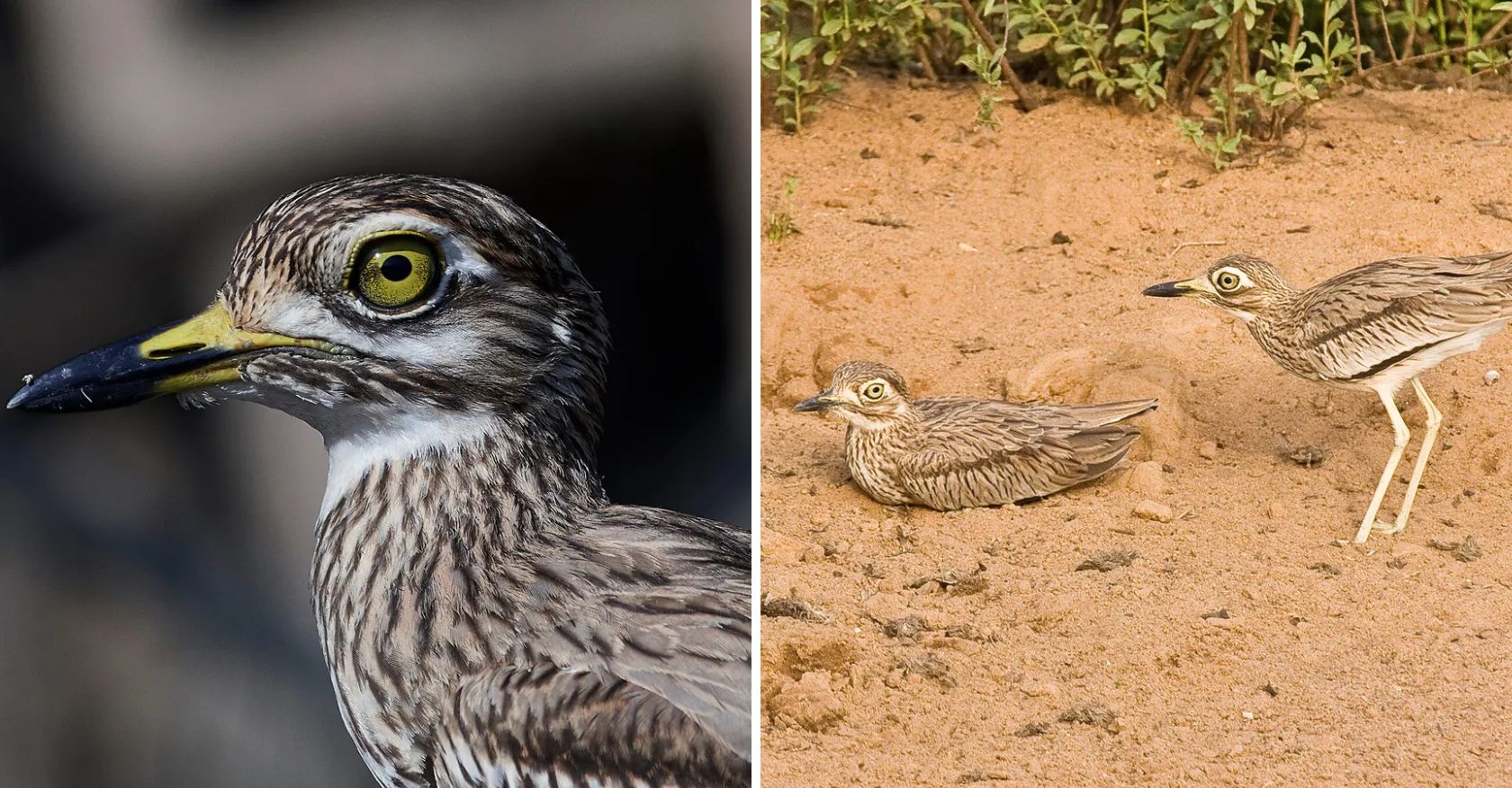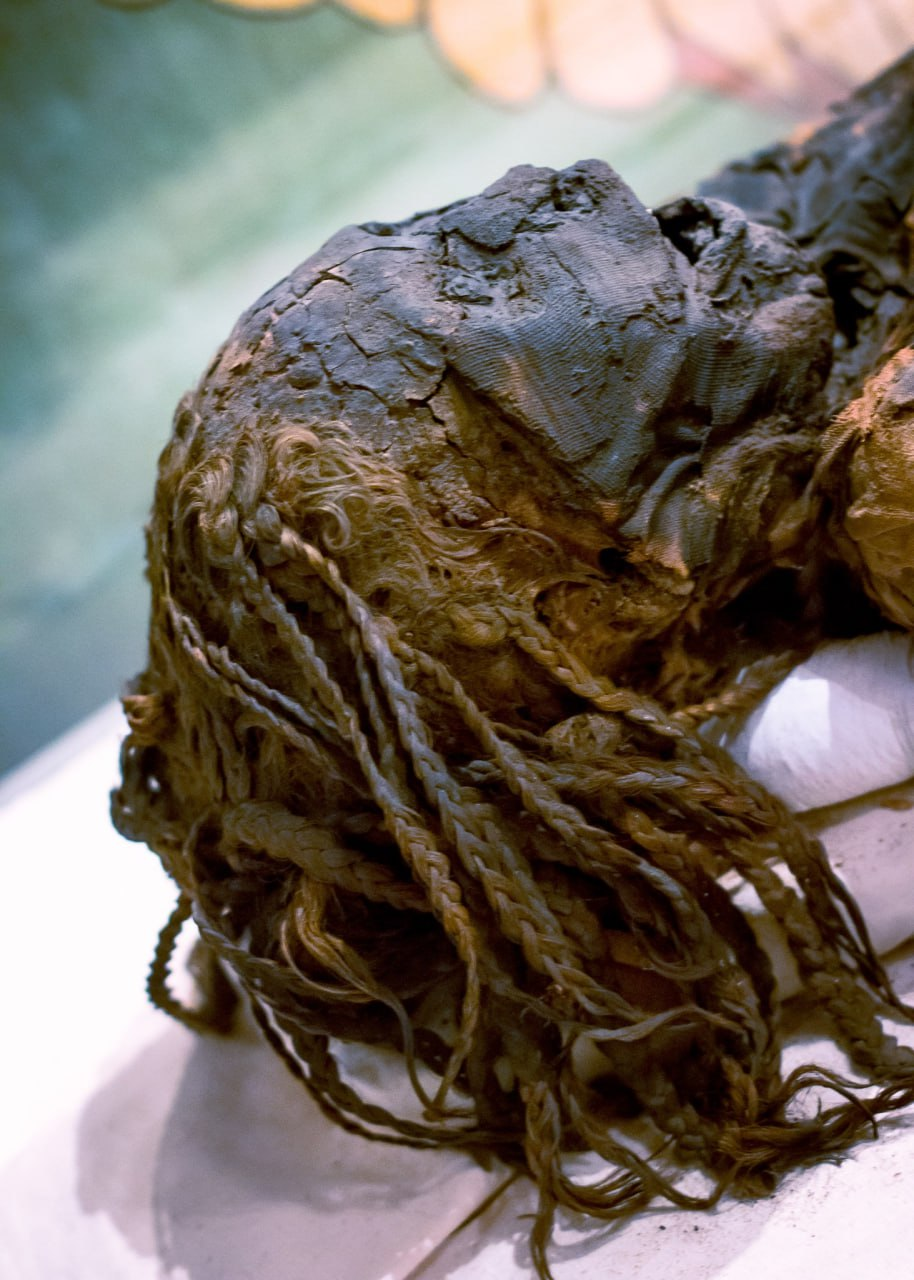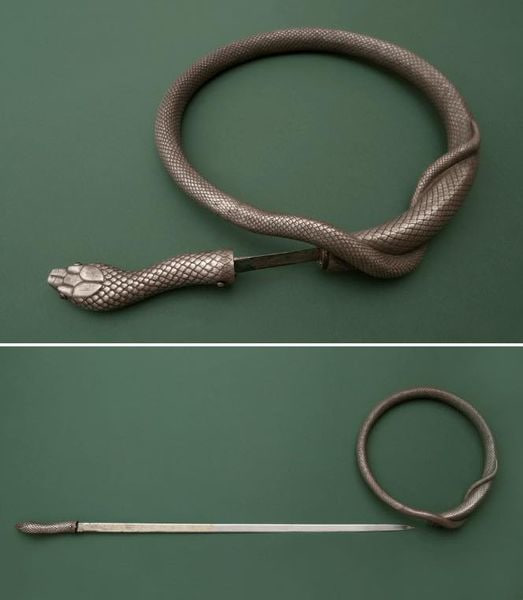There are eight species of Burhinus Thick-knees, four of which are monotypic and four polytypic (having sub-species). The Senegal Thick-knee is monotypic although it is very similar to the Water Thick-knee and the Eurasian Thick-knee (also known within Europe as the Stone Curlew). Burhinus Thick-knees should not be confused with Esacus Thick-knees which are of the same family, Burhinidae, but a separate genus.
There are eight species of Burhinus Thick-knees, four of which are monotypic and four polytypic (having sub-species). The Senegal Thick-knee is monotypic although it is very similar to the Water Thick-knee and the Eurasian Thick-knee (also known within Europe as the Stone Curlew). Burhinus Thick-knees should not be confused with Esacus Thick-knees which are of the same family, Burhinidae, but a separate genus.

What does a Senegal Thick-knee look like?
The Senegal thick-knee is a medium to large sized, long legged wader, with what is commonly referred to as cryptic plumage. In simple terms this means that the colour and patternation of the bird is such so as to afford maximum protection from predators due to its camouflage, rendering the bird extremely difficult to spot, particularly whilst motionless and within its natural habitat. The bird’s preferred habitat is semi-arid grassland and river banks, predominantly across central sub-Saharan Africa and this is reflected in the appearance of its plumage. Males and females are almost identical and there is no seasonal difference in colour or markings. Overall, they are a greyish brown with dark barring on the upper parts, head, face and breast with a paler plain lower breast and belly. The chin is a plain white and there is a white eye ring which appears thicker over the top of the eye as opposed to the thin line of the ring under the eye. There is a broad grey speckled band across the upper wing coverts which can be easily seen along the base of the closed wing and is edged in black. In flight, white spots are visible along the edges of the darker primary flight feathers. Unlike its closest relatives, the bill is black from its tip almost covering the entire lower mandible and as far as the nostrils on the upper mandible, but often still extending to the base of the upper mandible, whilst the area around the nostrils is a pale yellow. The eye is wide with a bold yellow iris. The legs are a dull pale yellow and knees are prominent hence its descriptive nomenclature.
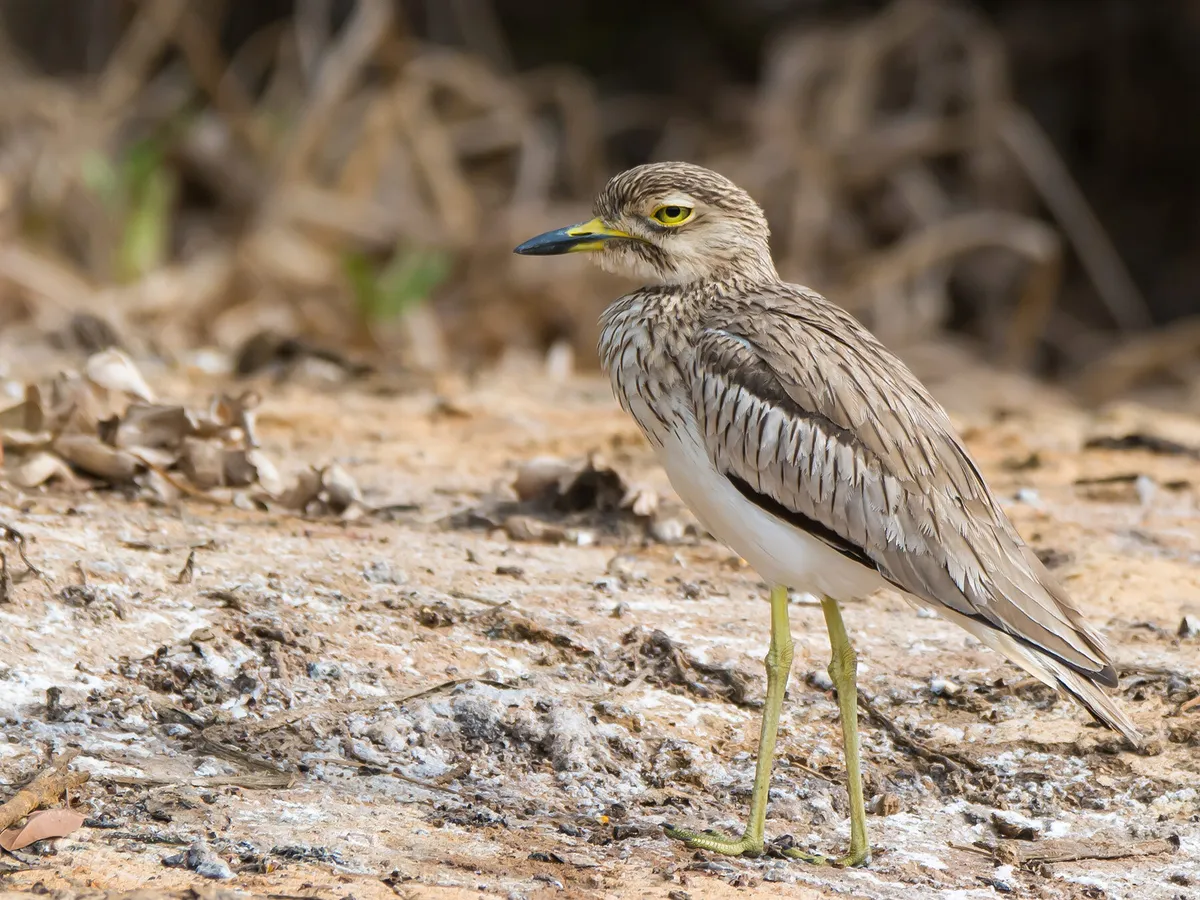
Close up of a Senegal Thick-knee
What does a Senegal Thick-knee sound like?
Generally, more prone to perform at dawn and dusk, the Senegal thick-knee issues a high pitched staccato whistle similar to ‘pi – pi – pi – pi’, which rises and falls in volume and pitch.
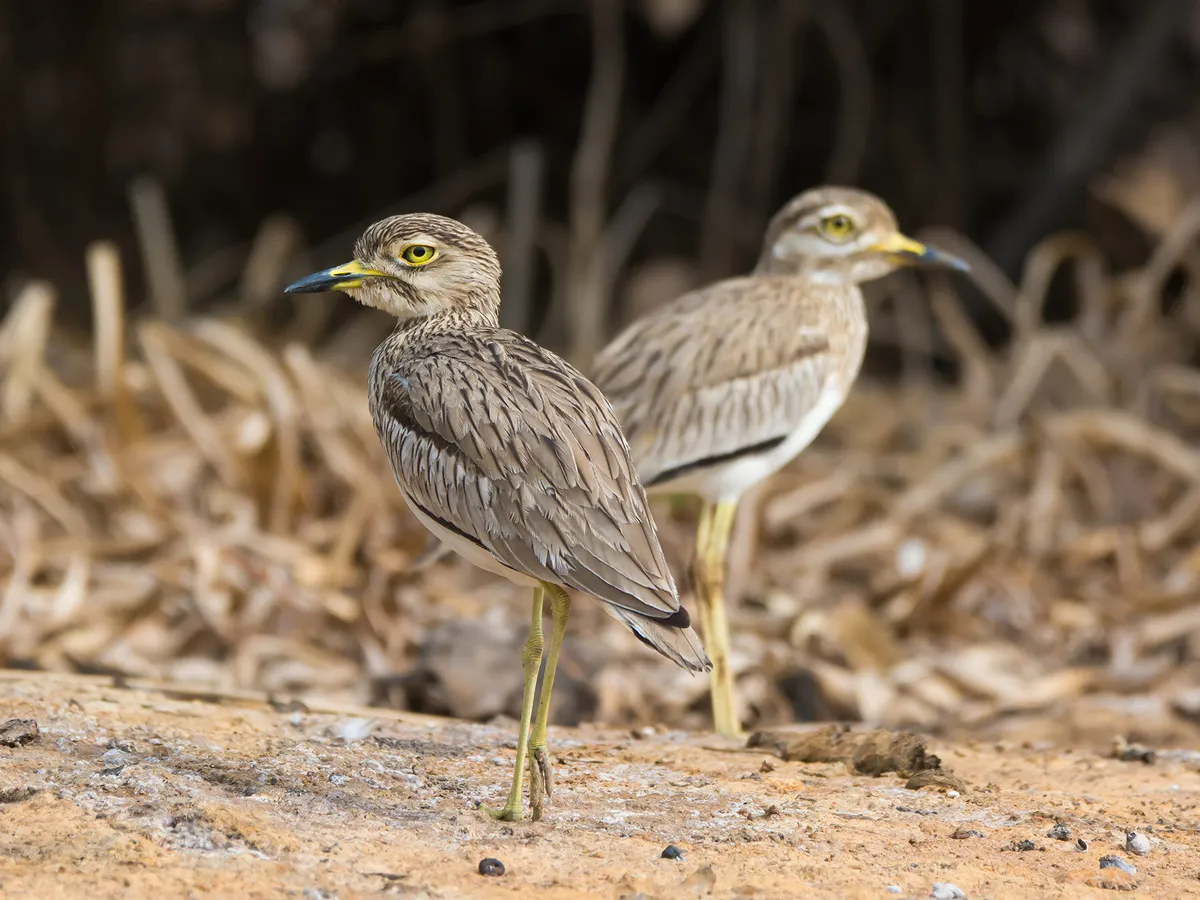
A pair of Senegal Thick-knees
What does a Senegal Thick-knee eat?
A ground forager, this bird survives on a diet of insects, invertebrates, crustaceans, small amphibians and reptiles.
Distribution
The Senegal thick-knee is commonly found across the African west coast from Senegal south through Gambia, Guinea, Sierra Leone, Liberia, Cote d’Ivoire, Ghana and Nigeria then inland to include Burkina Faso and Benin and east through Cameroon, the Central African Republic, Sudan and Ethiopia. From there it can be found south into Uganda and Kenya and north into Egypt, the Nile Valley and occasionally Israel.
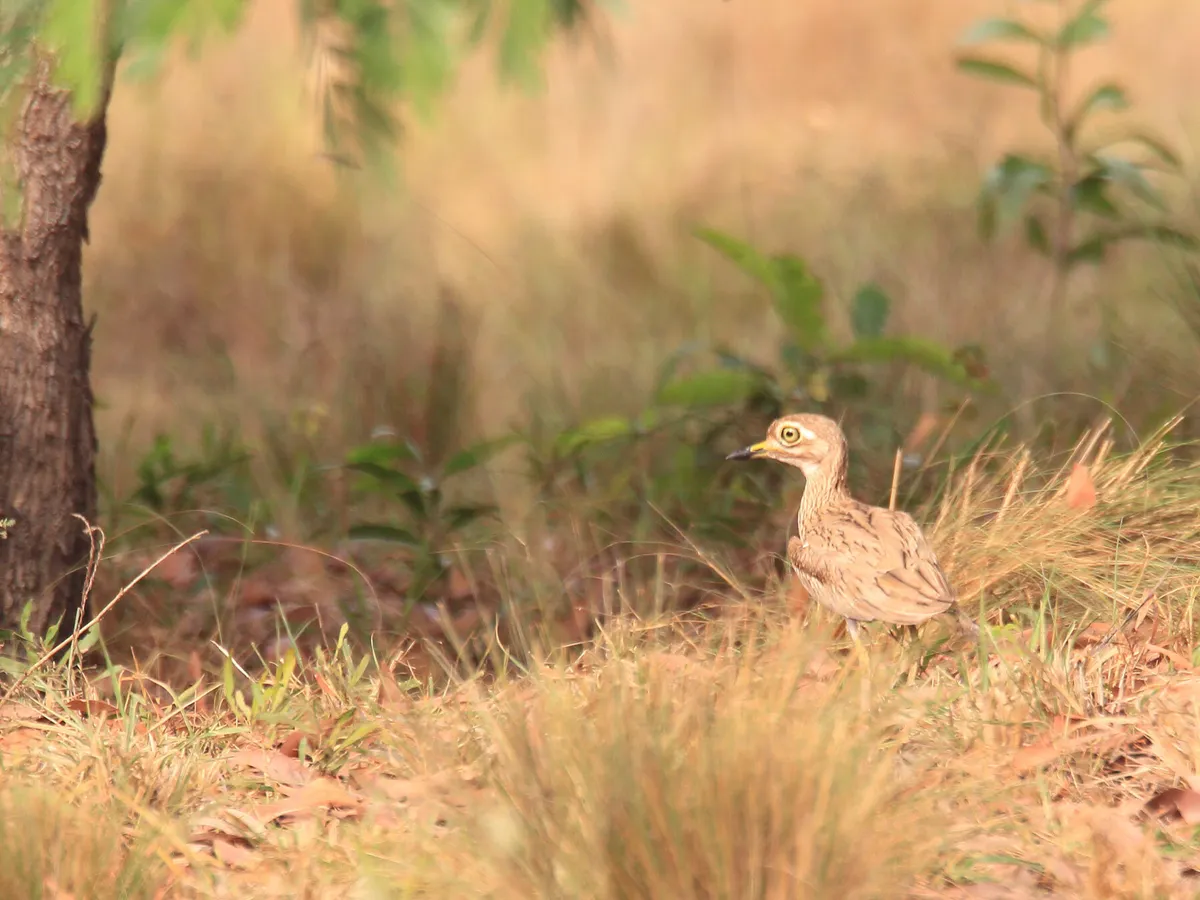
Signs and Spotting tips
Frequently seen in groups along muddy estuaries, deltas and river banks they are also known to migrate in small flocks across their range avoiding the particularly inclement weather of the wet season which predominates along the West African Coast. It can regularly be found roosting on buildings and can be a common neighbour to human settlements.

Breeding
The breeding season varies with location, normally coinciding with low river levels prior to seasonal rains and occurs between April through to September or even later. A nest is constructed in a scrape on the ground, often on small islands to escape predation, where one or possibly two broods averaging two eggs are laid annually. It is believed that both parents incubate the eggs which hatch after about three weeks but detailed information in this regard is unknown.
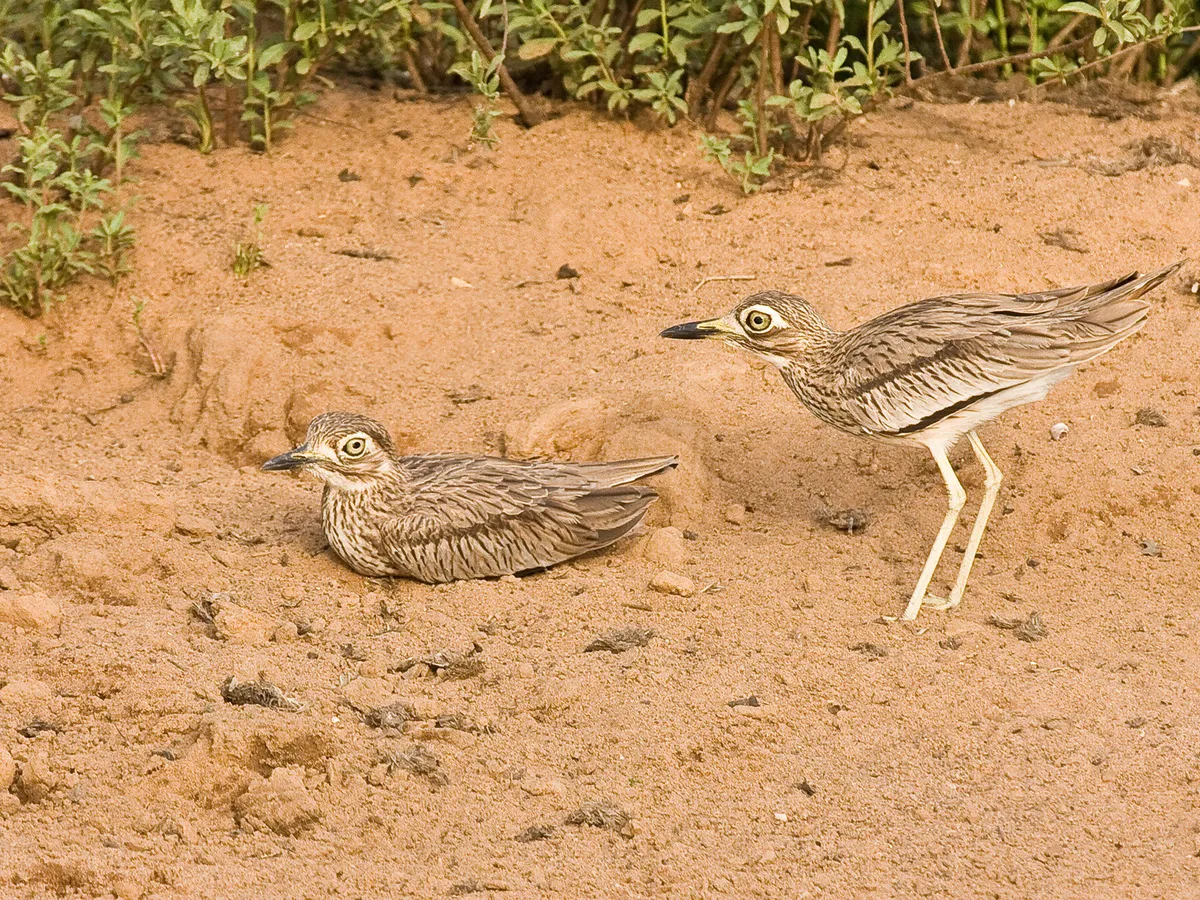
Senegal Thick-knee pair with one sat on nest

